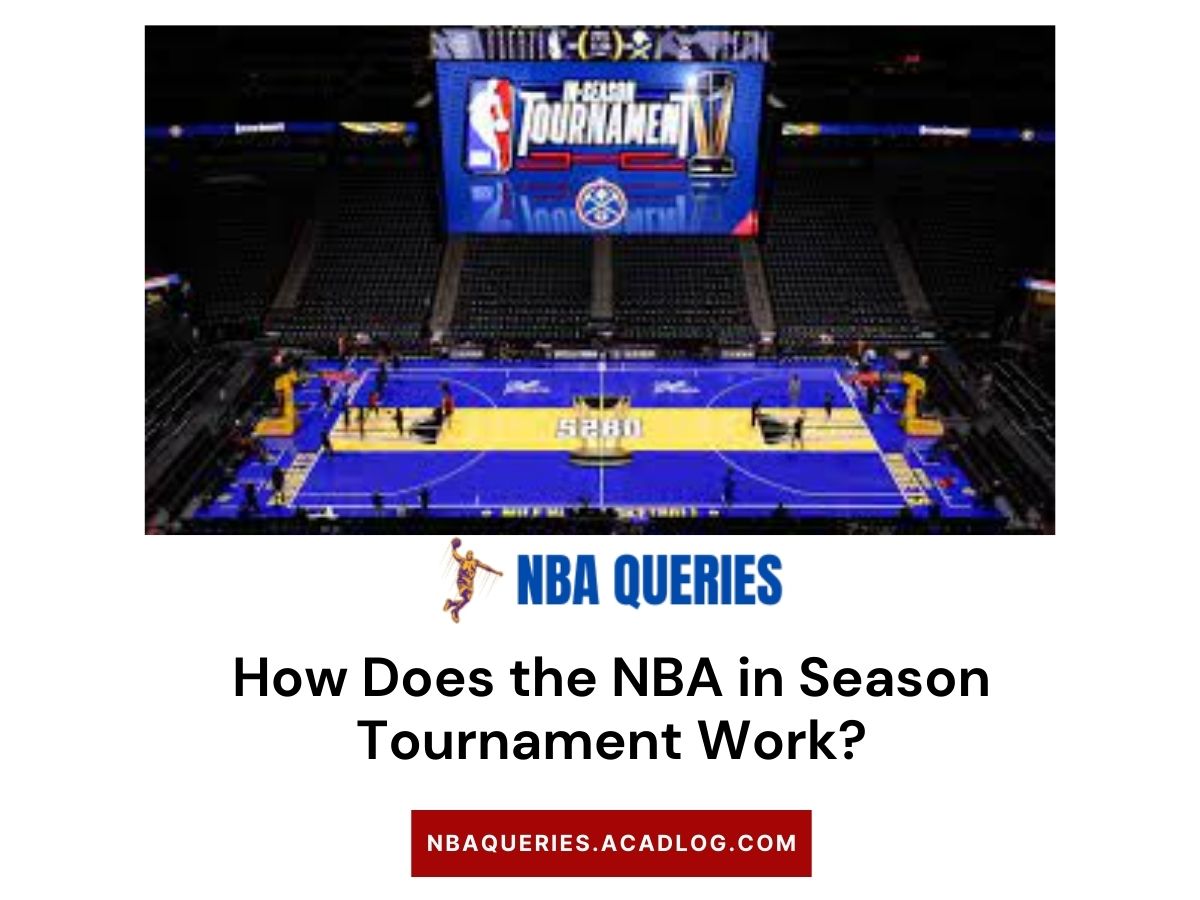The NBA In-Season Tournament, also known as the NBA Cup, is a relatively new addition to the league’s annual calendar. Introduced in the 2023-24 season, this tournament aims to add excitement and competitiveness to the regular season. In this article, we’ll discuss about the intricacies of how the NBA In-Season Tournament works, from group play to knockout rounds.
I. Group Play: The Foundation of the NBA Cup
The In-Season Tournament kicks off with the Group Play stage, where all 30 NBA teams participate. Here’s how it unfolds:
- Group Formation:
- The 30 teams are randomly divided into six groups of five teams each within their respective conferences (Eastern and Western).
- Each group consists of a mix of teams based on their won-loss records from the previous regular season.
- The goal is to create balanced groups, ensuring competitive matchups.
- Group Play Games:
- Starting from November 3 and continuing through November 28, teams play designated Group Play games on “Tournament Nights.”
- Each team faces its four group opponents once (two home games and two away games).
- These games contribute to both the In-Season Tournament standings and the overall regular-season standings.
- Tiebreakers:
- In case of ties within a group, the following tiebreakers are used:
- Head-to-head record in the Group Stage.
- Point differential in the Group Stage.
- Total points scored in the Group Stage.
- Regular season record from the 2022-23 NBA regular season.
- Random drawing (if needed).
- In case of ties within a group, the following tiebreakers are used:
- Qualification for Knockout Rounds:
- The team with the best standing in Group Play games from each group advances to the Knockout Rounds.
- Additionally, two “wild card” teams (one from each conference) with the best record among second-place finishers in their groups also qualify.
II. Knockout Rounds: The Quest for the NBA Cup
The Knockout Rounds follow the Group Play and determine the ultimate winner of the NBA Cup:
- Quarterfinals:
- Held in NBA team markets on December 4 and 5.
- Single-elimination games featuring the eight qualified teams.
- The matchups are intense, as teams battle for a spot in the Semifinals.
- Semifinals:
- Taking place on December 7.
- The four remaining teams face off in a do-or-die scenario.
- The stakes are high, with a chance to reach the Championship game.
- Championship:
- The pinnacle of the In-Season Tournament.
- Scheduled for December 9 at T-Mobile Arena in Las Vegas.
- The two surviving teams compete for the NBA Cup and a share of the prize pool.
- NBA Cup and Beyond:
- The winner of the Championship claims the prestigious NBA Cup.
- All 67 games across both stages (except the Championship) count toward the regular-season standings.
- Each team continues to play 82 regular-season games, including those in Group Play and the Knockout Rounds.
Now, let’s shift our focus to the tournament’s impact on players, teams, and fans.
I. Player Performance and Motivation
- Increased Intensity:
- The In-Season Tournament injects urgency into regular-season games.
- Players compete with heightened intensity, knowing that each win contributes to their team’s standing in both the tournament and the overall season.
- Individual Milestones:
- For players, the tournament provides an opportunity to achieve personal milestones.
- Scoring records, assists, rebounds, and defensive stats all matter in the context of the NBA Cup.
- Health Management:
- Coaches must strike a balance between pushing for victories and managing player workload.
- Resting star players strategically becomes crucial during the tournament.
II. Team Strategies and Adjustments
- Rotation Patterns:
- Coaches experiment with rotations, giving bench players more minutes.
- Depth becomes essential as teams navigate back-to-back games.
- Tactical Shifts:
- Teams adapt their game plans to exploit opponents’ weaknesses.
- Defensive schemes, offensive sets, and transition play are scrutinized.
- Chemistry Building:
- New acquisitions and young talents get integrated into team dynamics.
- The tournament accelerates chemistry development.
III. Fan Engagement and Excitement
- Novelty Factor:
- Fans embrace the fresh concept of the NBA Cup.
- The tournament generates buzz and anticipation.
- Local and National Pride:
- Fans rally behind their teams, creating a vibrant atmosphere.
- Regional rivalries intensify during Group Play and Knockout Rounds.
- Ticket Sales and TV Ratings:
- The NBA Cup attracts viewership.
- Ticket sales surge for tournament games, especially the Championship.
IV. Prize Pool and Financial Incentives
- Rewarding Success:
- The winning team claims a share of the prize pool.
- Players and staff receive financial incentives, motivating them further.
- Team Franchise Benefits:
- Success in the tournament enhances a team’s brand value.
- Sponsorships and merchandise sales see an upswing.
In the End
The NBA In-Season Tournament isn’t just about games; it’s a dynamic blend of competition, strategy, and fan engagement. As the league continues to embrace this exciting addition, keep an eye on the court—there’s more than just a trophy at stake! 🏀🔥

